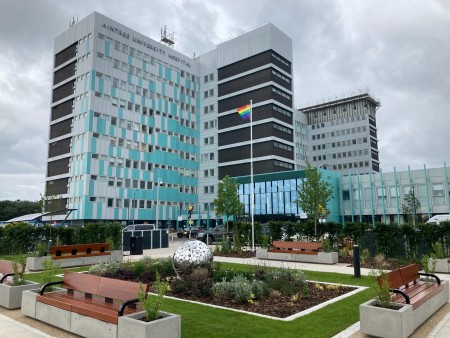There’s been lots of great work taking place across our sites to contribute to the Trust’s Cost Improvement Programme (CIP).
On this page we will go into detail about some of these fantastic projects!
If you have a CIP project you'd like to shine a light on, email savingtogether

In recent years, the external cladding and windows were showing signs of failure which were contributing to poor conditions within the wards, including failing insulation which was resulting in extreme heat gain in warmer temperatures, and heat loss in colder months. In 2019, it was agreed to undertake a major capital project to upgrade the entire façade of the tower block - the first of this scale since its initial construction.
The refurbishment of the tower block, which was built in the early 1960s, has reduced heat loss by 35% through the fabric of the building, and by 31% through infiltration loss. The project is expected to extend the life of the tower block by up to 30 years, offering a lower carbon alternative to the construction of a whole new building.
Nicola Daly, Head of Sustainability, said: “As a result of reduced heat load, which is the amount of heating or cooling necessary to maintain a required temperature, the new tower block is saving approximately 163 tonnes of CO2e per year, alongside a recurring £52,000. This environmental benefit is also supporting the Trust’s carbon reduction targets.”
This project supports the Trust’s ambition to reach net zero by 2040, as outlined in the Trust Sustainability Strategy. As of 2022/23, carbon emissions from energy at Aintree have reduced by 32%, compared to the baseline year of 2013/14.
The introduction of LED lighting across the Trust has also reduced energy costs, with £20,000 saved. LED lights can use up to 80% less energy than traditional bulbs as they are longer lasting and emit less heat. Further LED replacement schemes are ongoing across all sites.